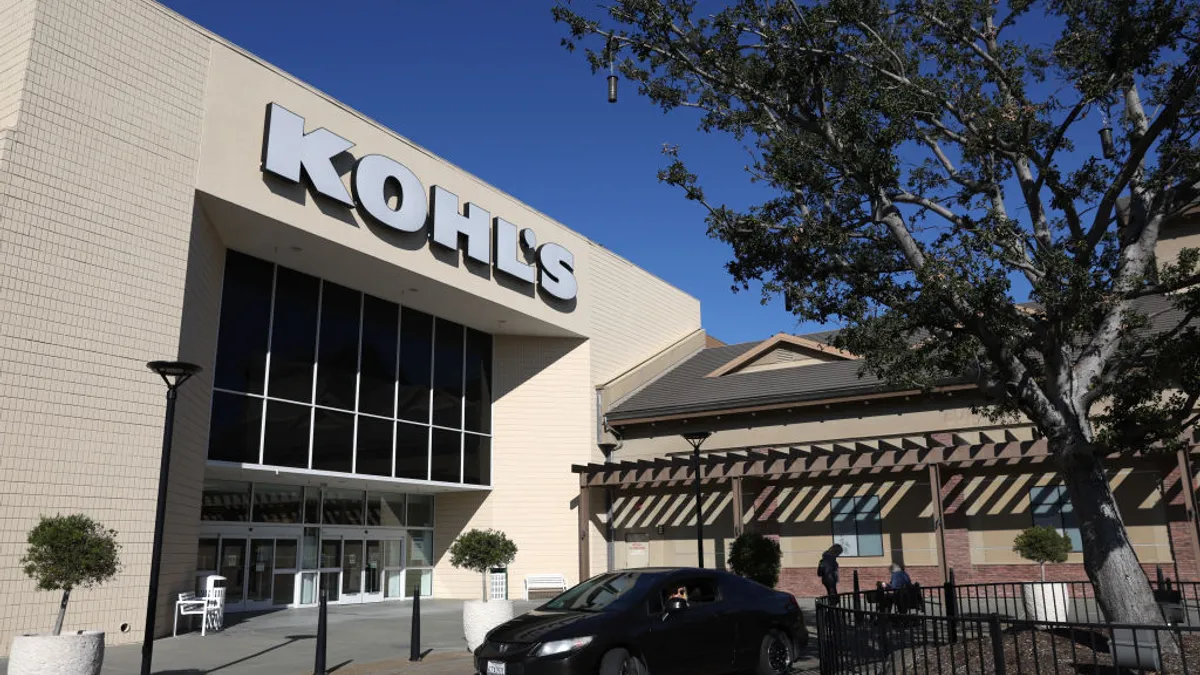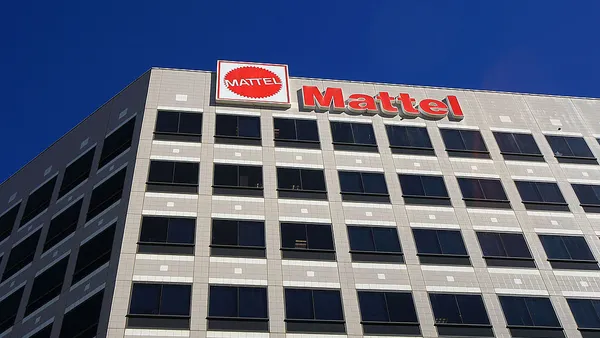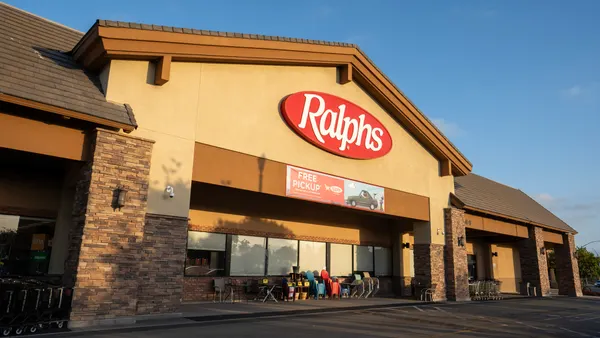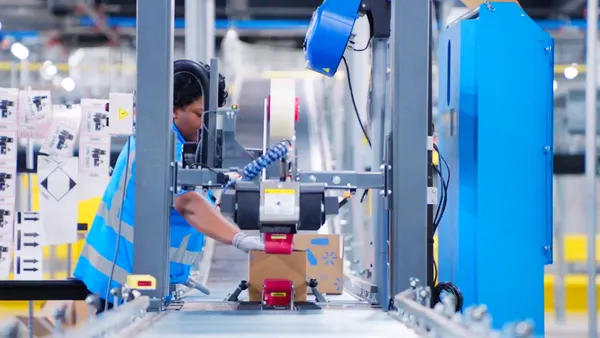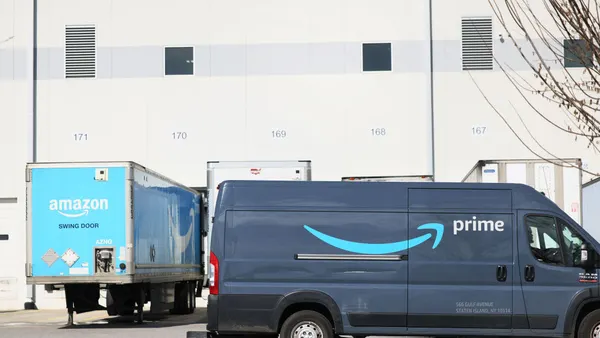Dive Brief:
- Facing sluggish sales and high inventory costs, Kohl’s is “being aggressive” about clearing excess product in the latter half of the year, CEO Michelle Gass said during the company’s Q2 earnings call.
- As part of its plan, the retailer is canceling orders and marking down prices to clear out older inventory. The company will monitor inventory levels carefully as it heads into the holiday season.
- “We've got to take care of it. So, we're clearing out the goods. We're cutting out receipts, and we are being more promotional,” Gass said. “I do think things will normalize. None of us have a crystal ball.”
Dive Insight:
Higher inventory levels led to hundreds of millions of dollars in added costs for Kohl’s in Q2, compared to the previous year, CFO Jill Timm said on the call. The bloated costs were a result of multiple factors, including weak consumer demand and the company’s investment in adding Sephora inventory at 400 stores this year.
Much of the cost also came from the retailer’s attempt to build up its inventories after suffering from stockouts late last year. Kohl’s focused on building up inventories in certain product categories in Q2, such as juniors, in a bid to meet demand. But when hit with long lead times to get products on shelves, Gass said it became an inventory hiccup, leaving Kohl’s with products consumers no longer wanted.
“As we look ahead on supply chain, we're already seeing that today where the time is coming back. But over the last couple of years, 18 months, those time lines have gotten long,” Gass said. “And as you well know, as it relates to young women and juniors, those cycles can change pretty rapidly.”
In an attempt to better account for those extended lead times and meet demand, Kohl’s built in higher in-transit inventories in Q2. It also utilized a “pack and hold” strategy for low-selling products, with plans to put them back on shelves in Q3. Together, the two strategies added $351 million in inventory costs during the quarter.
Retailers like Kohl’s have been particularly prone to inflation-induced demand drops. Target’s inventory glut is also dragging down sales, despite deploying similar strategies as Kohl’s to cancel orders and cut prices. Like Kohl’s, Target pushed to bring in new inventory earlier this year to meet demand, but is now suffering from the whiplash of tightened consumer spending.
Moving into peak shopping season, Gass said Kohl’s will lean on its new Sephora partnership, inventory management strategies and promotional plans.
“We feel like we're putting our best foot forward in the back half. We have great confidence in our long-term strategy. We're seeing that play out as we open these Sephora doors,” she said. “And in the moment, we’ll be agile and responsive to what the customers need.”



